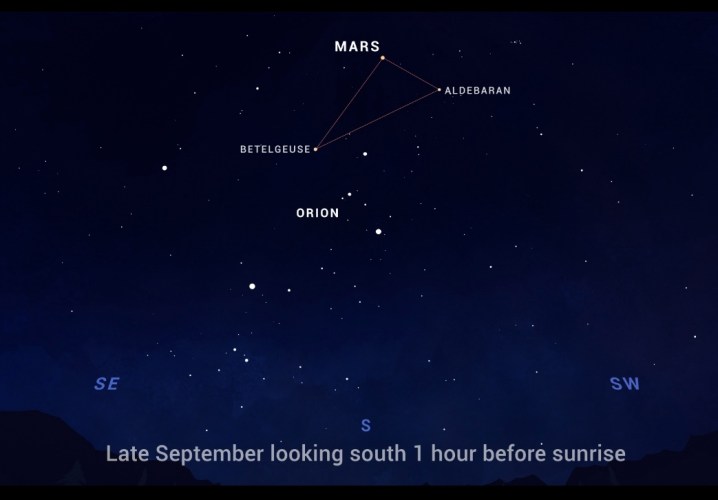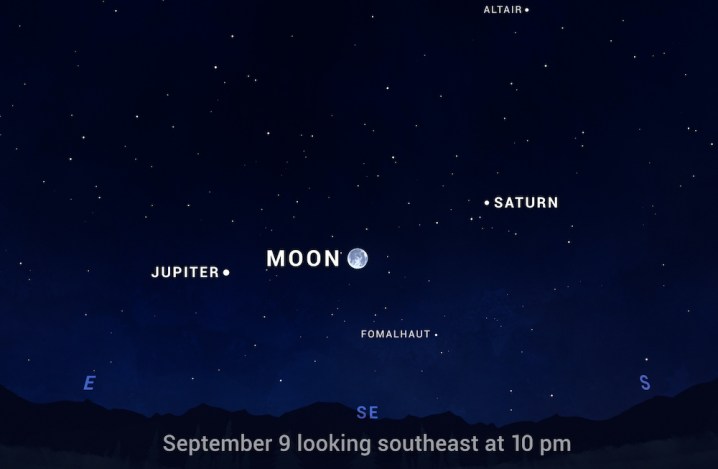NASA is back with its monthly roundup of what to look out for in the sky over the coming weeks.
Mars, Jupiter, and Saturn all feature, though with the long-awaited Artemis I mission set to get underway this weekend, we’re also giving the moon a special mention.
But let’s start with Mars. Gaze skyward before sunrise and you’ll spot the red planet high in the south, the planet distinguishable by its salmon-pink color. And take note, you don’t need binoculars to view Mars, just a clear sky.
“Over the course of the month, Mars works its way eastward from Aldebaran toward reddish Betelgeuse, creating a sort of ‘red triangle’ in the morning sky,” NASA says on its website, adding that it will then appear to “hit the brakes and halt its eastward motion, to hang out in that triangle for the next month or so.”

This month also presents an excellent opportunity to observe Jupiter, the largest planet in our solar system. The celestial body hit the headlines last month when the James Webb Space Telescope captured an astonishing image showing the planet as we’ve never seen it before.
Before sunrise, on the morning of September 11, you’ll see Jupiter just a couple of finger-widths from the moon — at least, that’s how it’ll look from Earth.
You can easily view Jupiter with the naked eye, but if you have a pair of binoculars or telescope handy, you’ll also be able to get a glimpse of Jupiter’s four large moons, which will appear as little starlike points of light very close to the planet.
NASA notes that its Jupiter-orbiting Juno spacecraft is set to make a fly-by of one of these icy moons, Europa, on September 29, coming within just 200 miles of its surface while collecting a trove of science data to send back to Earth.
Once you have Jupiter in your sights, spotting Saturn should be a breeze.
“On the night of the 9th, Jupiter and Saturn escort the moon across the sky,” NASA says. “You’ll find the trio rising in the southeast in the first couple of hours after dark, and gliding westward together over the course of the night. By the end of the month, you’ll find the pair of planets rising even earlier, appearing in the east soon after it gets dark, with bright Jupiter hanging low in the sky.

Finally, we recommend taking a moment to gaze at the moon to ponder how our nearest neighbor is once again at the center of our quest to launch astronaut missions beyond low-Earth orbit. The task begins on Saturday with the launch of NASA’s Artemis I mission using the most powerful rocket it’s ever built. The mission will be uncrewed, but it will pave the way for astronaut voyages, including a lunar landing before the end of this decade. And from there, we could go on to Mars in the 2030s.
If you need help spotting any of the planets or stars mentioned above, then simply grab one of these super-useful astronomy apps, which include augmented-reality features to help you easily identify everything you see in the night sky.


